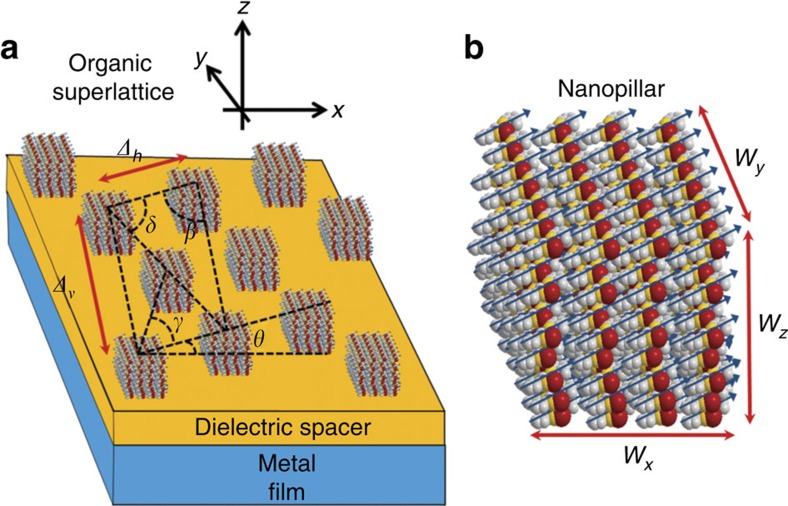Figure 1. Plexciton setup.
(a) It consists of a plasmonic metal film, a dielectric spacer and an organic layer. The latter is taken to be a monoclinic superlattice of organic nanopillars, which makes an angle θ with respect to the x axis and is further characterized by angles β, γ, δ as well as distances between nanopillars Δh and Δv. When the density of emitters in the organic nanopillars is big enough, the coupling between the excitons in the organic layer and the surface plasmons (SPs) in the metal becomes larger than their linewidths, giving rise to polaritonic eigenmodes that are superpositions of excitons and plasmons, or more succintly, plexcitons. In this article, we shall also consider the case where the dielectric spacer is a magneto-optical (MO) material. The superlattice design is not essential for our purposes, except for guaranteeing a global gap for topological modes spanning all wavevectors. Hence, one may substitute it with a standard molecular crystal with some trade-offs. (b) Zoom-in view of a nanopillar. It is a parallelepiped of dimensions Wi along each axis, and consists of closely packed organic emitters (represented by balls and sticks) each featuring a transition dipole (blue arrows).

